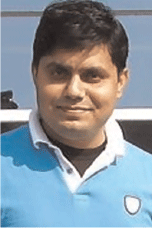Examining the processing differences between P and P-S waves in a Rocky Mountain Foothills model
Sanjeev Rajput A and Michael Ring ABaker Hughes Incorporated.
The APPEA Journal 54(2) 504-504 https://doi.org/10.1071/AJ13077
Published: 2014
Abstract
For the past two decades, most of the shear-wave (S-wave) or converted wave (P-S) acquisitions were performed with P-wave source by making the use of downgoing P-waves converting to upgoing S-waves at the mode conversion boundaries. The processing of converted waves requires studying asymmetric reflection at the conversion point, difference in geometries and conditions of source and receiver, and the partitioning of energy into orthogonally polarised components. Interpretation of P-S sections incorporates the identification of P-S waves, full waveform modelling, correlation with P-wave sections and depth migration. The main applications of P-S wave imaging are to obtain a measure of subsurface S-wave properties relating to rock type and fluid saturation (in addition to the P-wave values), imaging through gas clouds and shale diapers, and imaging interfaces with low P-wave contrast but significant S-wave changes. This study examines the major differences in processing of P and P-S wave surveys and the feasibility of identifying converted mode reflections by P-wave sources in anisotropic media. Two-dimensional synthetic seismograms for a realistic rocky mountain foothills model were studied. A Kirchhoff-based technique that includes anisotropic velocities is used for depth migration of converted waves. The results from depth imaging show that P-S section help in distinguishing amplitude associated with hydrocarbons from those caused by localised stratigraphic changes. In addition, the full waveform elastic modelling is useful in finding an appropriate balance between capturing high-quality P-wave data and P-S data challenges in a survey.

Sanjeev Rajput received M.Tech and Ph.D in Applied Geophysics from Kurukshetra University Kurukshetra, India, and Post-Doctoral fellowship from University of Texas at Austin, USA. He is currently the Principal Geophysical Advisor of Baker Hughes Incorporated. He spent 12 years in petroleum industry working in oil and gas exploration worldwide involving technical lead positions. He is currently leading several projects of conventional and unconventional hydrocarbon exploration and field development. His research interest includes seismic wave propagation, quantitative seismic interpretation and inverse theory. He has published 40 peer-reviewed papers on wide range of geophysical problems and co-authored in a text book on geophysical techniques for unconventional hydrocarbon resources. |

A senior Geoscientist with 37 years of on-hands technical experience in oil and gas exploration and development projects worldwide; with emphasis on technical applications. Excellent Geology and Geophysical (G&G) technical skills, strong background in petroleum system concepts and project management. Expert knowledge of seismic interpretation systems. Senior E&P management and team leadership skills; knowledge of commercial and operational issues. Extensive background in AVO/AVA analyses, reservoir characterization and the estimation and valuation of oil and gas reserves/resources. Currently functioning as a lead geophysical specialist and subsurface manager for a brownfield field development project in Malaysia with RDS-BHI. |
References
Christeson, G.K., Mcintosh, K.D., and Shipley, T.H. (2000). Seismic attenuation in the Costa Rica margin wedge: amplitude modelling of ocean bottom hydrophone data. Earth and Planetary Science Letters 179, 391–440.Digranes, P., Mjelde, R., Kodaria, S., Shimamura, H., Kanasawa, T., Shiobara, H., and Berg, E.W. (1996). Modelling shear waves in OBS data from the Voring Basin (northern Norway) by 2D ray tracing. PAGEOPH 147, 611–29.
Kim, S.D., Nagihara, S., and Nakamura, Y. (2000). P- and S-wave velocity structures of the Sigbee abyssal plain of the Gulf of Mexico from ocean bottom seismometer data. Gulf Coast Association Geological Societies (GCAGS) 50, 475–84.
Kopp, H. (2002). BSR occurrence along the Sunda margin: evidence from seismic data. Earth Planetary Science Letters 197, 225–35.
Mikhailov, O., Johnson, J., Shoshitaishvili, E., and Frasier, C. (2001). Practical approach to joint imaging of multicomponent data. Leading Edge 20, 1016–21.
Rajput, S., Thakur N.K., and Joshi A., 2008—Full waveform seismic modelling for gas hydrates studies. 70th EAGE Conference & Exhibition, Rome, Italy, 9–12 June 2008.
Walther, C.H.E. (2003). The crustal structure of the Cocos ridge off Costa Rica. Journal of Geophysical Research 108, 2136.


